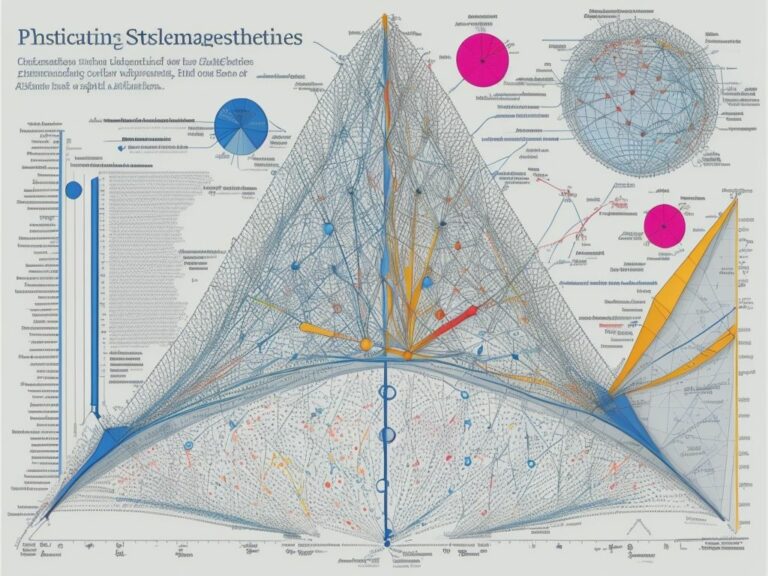What Is Qualitative Data?
Different types of data are defining a growing number of our online activities, with qualitative data, or data that can be conveyed with explanations and emotions, being among the most prevalent and popular.

In this article, we will delve deeper into the definition and details of qualitative data, so keep on reading below to learn more.
What Is Qualitative Data?
Qualitative data is descriptive in nature, providing feedback with thoughts and words instead of quantifiable data.
Analyzing qualitative data that have been collected is not possible, as such information is not of mathematical or statistical nature and you cannot, therefore, count them or measure them.
Such kind of information provides an answer to more theoretical questions that are used in analyses.
Qualitative data is frequently used to carry out open-ended research projects, enabling participants to express their genuine thoughts and emotions without any censorship and without being directed by other people or situations.
So, view qualitative data as the kind of information you would collect when you asked people about the reason behind their actions and thoughts.
What Exactly Is Qualitative Research?
Qualitative research does not just help with data collection, but also allows the research team to comprehend the patterns and explanations of the participants’ acts (Also check out the How To Clean Data).
This kind of data analysis concentrates on the attributes of the participants, that is the actions hidden behind the figures.
It is versatile and repetitive. For instance:
- The films playing in the local cinema were all directed by the same filmmaker.
- The young man held a guitar and played an old song.
- The song was soothing and made us feel better.
The Significance Of Qualitative Data
The recurrence of specific attributes or traits can be determined using qualitative data.
Once you understand the data you have collected, you can better understand what the participants need or think of.
If you are, for example, a supermarket manager, a qualitative survey can help you understand what your customers want to be improved or changed in your store, and what they want to stay the same.
That way, you can implement the necessary changes and make them feel more satisfied with being heard and with the services you offer them.
Qualitative data assists market researchers in responding to questions such as what concerns or difficulties they are experiencing, what inspires them, and also what could be improved.
Qualitative Data Features
Qualitative data has a wide range of features. There are several characteristics that stand out from the other data and need to be comprehended for effective data analysis.
- Explanatory: explaining or categorizing in an open-minded and unbiased manner.
- Detailed: provide a detailed report using words.
- Open-ended: lacking a fixed limit on how long the respondents’ answers can be, i.e. not a ‘yes’ or ‘no’ question.
- Non-numerical: a complete absence of figures.
- Open to interpretation: influenced or driven by personal sentiments, preferences, or viewpoints.
These characteristics can make you realize the purpose behind the argument, for lack of a more appropriate term, what’s behind the results—in qualitative data sets.

When Can Qualitative Research Be Used?
When to use qualitative data is among the most valuable things to understand.
When determining specific trends of traits or features or forming criteria for larger sets of information to be examined, qualitative data are the best type of data to collect. The use of qualitative data allows observers to analyze the world around them.
You can also use qualitative data for your respondents to respond to questions such as who they are, what concerns or challenges they are experiencing, and to let them inform you where you should concentrate your efforts so that you can best address these challenges.
Qualitative data is commonly collected to get a better insight into the language the customers are speaking, so use it as needed.
The Advantages And Disadvantages Of Qualitative Data
Qualitative data offers an elaborate, in-depth insight into a topic and is obtained by monitoring and conducting interviews with a group of individuals. Such data has both advantages and disadvantages.
Advantages Of Qualitative Data
- Qualitative research is inexpensive and only necessitates a small number of participants.
- Qualitative data is predictive and offers detailed insight into progress.
- Qualitative research is based on the specifics of individual decisions and uses them as relevant data.
- By employing open-ended questions, qualitative research attempts to eliminate bias from the data obtained.
- Any conceptual framework analysis can benefit from qualitative data collection.
Disadvantages Of Qualitative Data
- Qualitative information might need a long time to be obtained and is difficult to expand to a larger number of people.
- Qualitative research can still generate biased pieces of data, regardless of the open-ended questions used.
- Qualitative data can entail a great deal of repetition and is frequently challenging to reproduce.
- The expertise of the research teams is central to qualitative data analysis.
- Qualitative data does not provide numerical inference; for that, numerical data must be used.
Methods For Collecting Qualitative Data
The following are the major techniques and methods for gathering data used in qualitative studies and research:
Personal Interviews
Because of their personalized approach, personal interviews are among the most widely employed deductive methods of gathering data for qualitative studies.
Discussion Groups
Discussion groups of between six and ten individuals are realized as informal chats. The facilitator oversees and directs the discussion based on the research questions.
Information Records
Using pre-existing solid data is a terrific method for obtaining qualitative data.
Observation
The data collector typically observes behavioral patterns in a subject’s natural setting.
Case Studies
Case studies are in-depth examinations of an individual or group, with an emphasis on developmental factors in connection to their surroundings.
Longitudinal Research
A study in which individuals that share a particular trait are observed over time.
The Bottom Line
Qualitative data are collected from qualitative research and can be used for many reasons. They are useful in gaining subjective data and analyzing the reasons behind people’s actions and thoughts.
So, if that is something you are hoping to gain insight into, you should be looking to collect qualitative data from your surveys and interviews.
- What Polls Reveal About Sleeping Together Early and Long-Term Relationship Success - July 7, 2025
- How to Design a Hard Harry Potter Trivia Challenge - October 4, 2023
- How to Design a Dear Peachie Makeup Preference Poll - October 4, 2023










